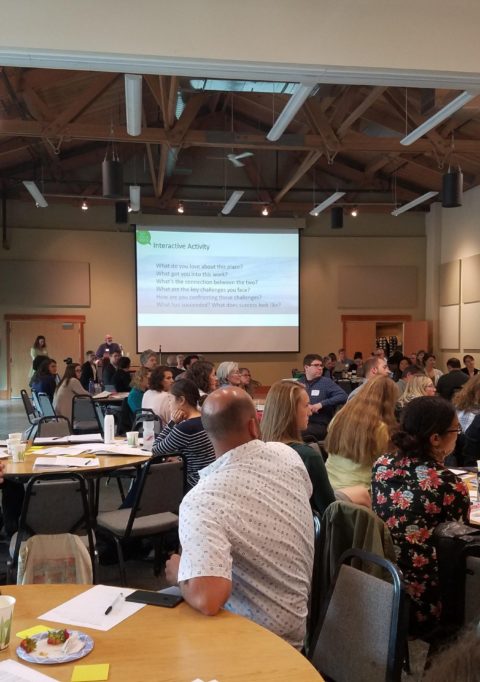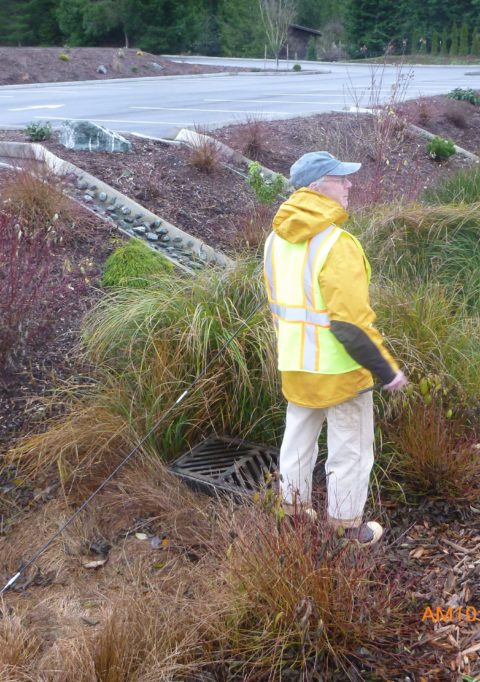Vancouver, Wash. – Maul Foster & Alongi, Inc. (MFA), a leading Pacific Northwest multidisciplinary firm, is excited to announce the acquisition of Peak Sustainability Group, a respected Bellingham, Washington-based firm specializing in climate change and sustainability services. The acquisition of Peak reflects MFA’s ongoing commitment to environmental stewardship and sustainable business practices. This partnership enables MFA…
Farmers adapt solar arrays for growing crops
Image credit: Agrivoltaics: How Solar and Farmland can Fight Climate Change (solarreviews.com)
Agrivoltaics produce electricity and grow crops on the same land
Using the power of the sun solves a host of problems such as reducing farmers’ energy costs, optimizing land use, reducing evaporation, and lowering costs through efficiencies. It is also known as solar sharing where the same land is used to grow crops and solar energy production. This relatively new solution takes advantage of the power of the sun to help crops grow while also generating electricity. And with climate change a hot-button issue, agrivoltaics could be a key part of our sustainable future.
Increase crop yields while also using fewer resources
Agrivoltaics, or the practice of growing crops in close proximity to solar panels, is one solution in a toolkit of solutions. Researchers are still exploring all of the potential benefits of agrivoltaics, but early results look promising. So far, it appears that this approach can reduce water usage, lower fertilizer needs, reduce temperatures in the vicinity of the plants, and improve crop yields. Agrivoltaics could be a game-changer for agriculture, and we could see more widespread adoption in the years to come.
“Part of it [agrivoltaics] is making renewable energy better. … a simple idea like growing your plants under solar panels can solve some important problems. This work truly is at the nexus of food, energy, and water science.”
What is Agrivoltaics? | UArizona Research, Innovation & Impact
—Greg Barron-Gafford, Assistant Professor, UA School of Geography & Development
The multiple benefits of farming under solar arrays
Farming is extremely energy-intensive and has created about one-third of greenhouse gas emissions and accounts for 85% of global water consumption. However, with agrivoltaics, farmers can lower electricity costs, reduce water use, increase crop production and yields (in select crops), reduce crop loss in heat events, and diversify revenue sources for farmers. It’s a symbiotic arrangement where solar panels were found to produce 10% more power because the plants grown under them cool the solar panels through evapotranspiration so they operate more efficiently.
Win-win in the climate change toolkit and resilient communities
By pairing solar panels with farmland, we can also meet renewable energy output needs. In fact, the article below notes a University of Oregon study that says that it would only take 1% of US farmland use with agrivoltaics to produce the renewable energy we need. Using the power of the sun to grow crops makes food production more resilient.
“Agrivoltaics address the need for reliable, clean energy to keep our society running without emitting tons of carbon dioxide. It conserves water in a time where water scarcity is a bigger issue than ever.”
How Solar and Farmland can Fight Climate Change (solarreviews.com)
There are so many reasons why it’s important that we take this dynamic solution seriously. Read the SolarReviews article to learn more about how this solution is already working in places like France and Japan to implement in our collective fight against climate change.

















